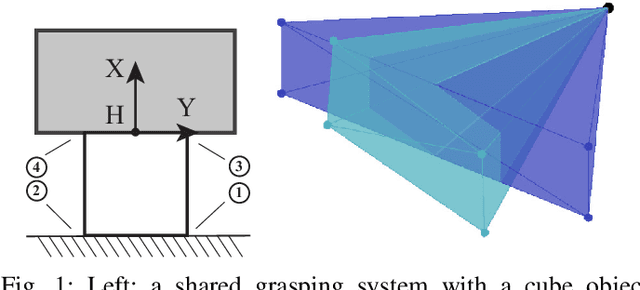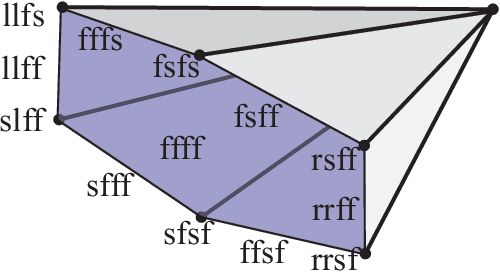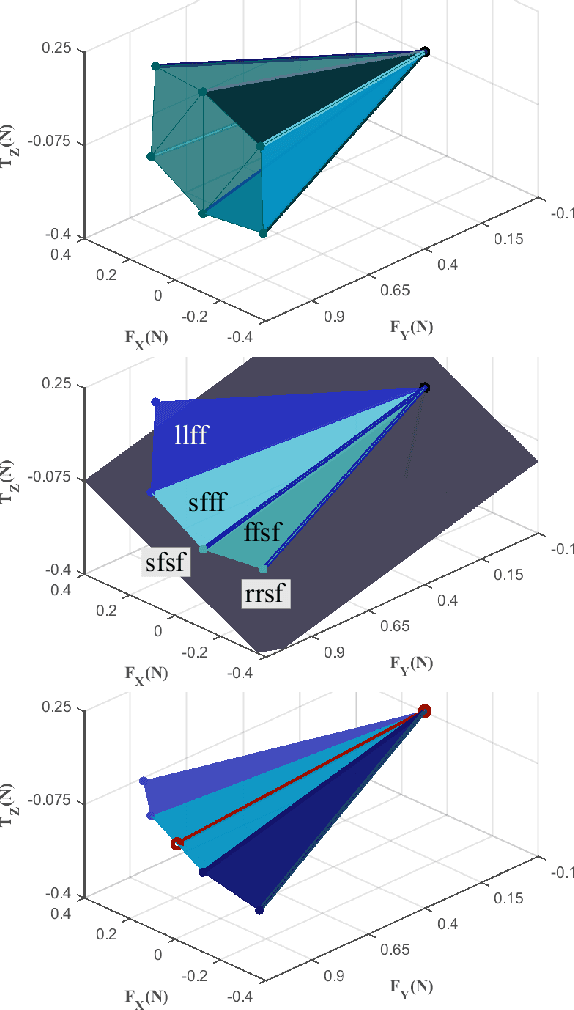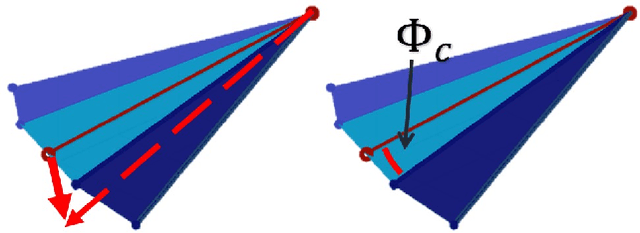Manipulation with Shared Grasping
Paper and Code
Jun 04, 2020



A shared grasp is a grasp formed by contacts between the manipulated object and both the robot hand and the environment. By trading off hand contacts for environmental contacts, a shared grasp requires fewer contacts with the hand, and enables manipulation even when a full grasp is not possible. Previous research has used shared grasps for non-prehensile manipulation such as pivoting and tumbling. This paper treats the problem more generally, with methods to select the best shared grasp and robot actions for a desired object motion. The central issue is to evaluate the feasible contact modes: for each contact, whether that contact will remain active, and whether slip will occur. Robustness is important. When a contact mode fails, e.g., when a contact is lost, or when unintentional slip occurs, the operation will fail, and in some cases damage may occur. In this work, we enumerate all feasible contact modes, calculate corresponding controls, and select the most robust candidate. We can also optimize the contact geometry for robustness. This paper employs quasi-static analysis of planar rigid bodies with Coulomb friction to derive the algorithms and controls. Finally, we demonstrate the robustness of shared grasping and the use of our methods in representative experiments and examples. The video can be found at https://youtu.be/tyNhJvRYZNk
 Add to Chrome
Add to Chrome Add to Firefox
Add to Firefox Add to Edge
Add to Edge